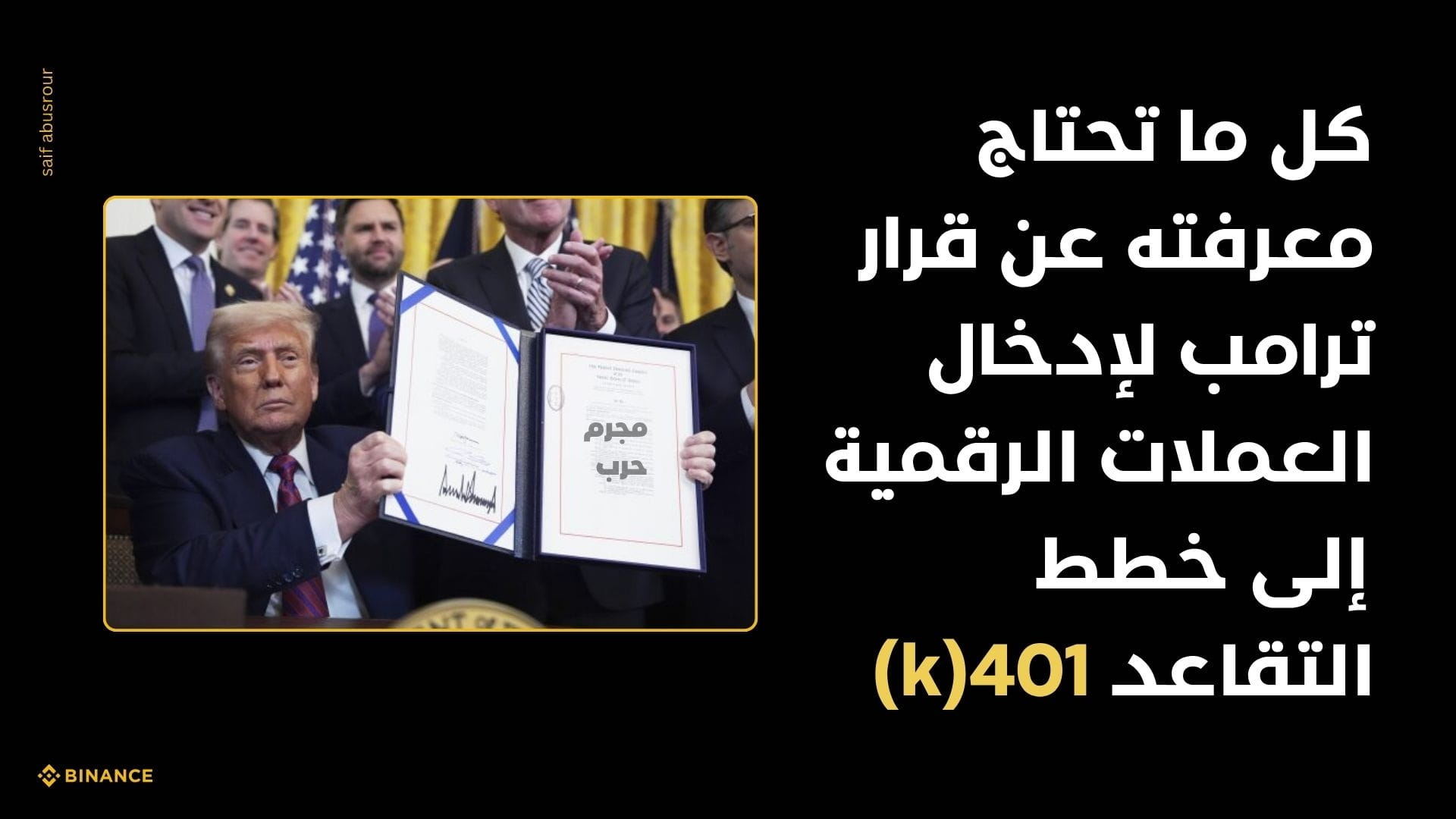
U.S. President Donald Trump signed an executive order allowing American citizens to invest in cryptocurrencies within 401(k) retirement plans, which is the most important savings tool for the majority of employees in the United States. This decision could radically change the nature of retirement portfolios, which have traditionally relied on a relatively safe mix of stocks and bonds known as the 60/40 ratio or on time-sensitive funds. A 401(k) plan is a retirement savings system provided by companies for their employees, where the employee deducts a portion of their salary before or after tax deductions in the case of a Roth 401(k), and the amount is invested in diverse assets such as stocks, bonds, and mutual funds, often with the employer offering a matching contribution that enhances returns. According to first quarter 2025 data, total assets in 401(k) plans reached about $8.7 trillion, with an average balance of $127,100, while total savings contributions between the employee and employer reach 14.3%, the highest historically. For the first time, these funds, which are traditionally managed with low risks, will be able to enter the world of highly volatile assets like Bitcoin and Ethereum, opening the door for a massive segment of savers looking for higher returns than the traditional market. The decision comes at a sensitive moment as Bitcoin approaches the $120,000 level, which could increase market attractiveness for new investors. The inclusion of cryptocurrencies in retirement plans could mean billions of dollars flowing into the crypto market, potentially increasing trading volumes, enhancing liquidity, and deepening the market. Additionally, adding an asset that is not entirely correlated with traditional markets could give portfolios greater resilience against inflation or stock volatility, with the possibility of improving overall returns in the long term. Institutions managing retirement plans will need to develop institutional and safe investment tools to meet this change, which could push towards more regulation and transparency in the cryptocurrency sector. On the other hand, risks remain high, as the volatility of digital asset prices could lead to significant losses in retirement savings over short periods, which could spark political and economic controversy if retirees' funds face sharp fluctuations. The decision presents the crypto market with a historic opportunity to integrate into the core of the American financial system, but it also raises a critical question: Will this step mark the beginning of a new era for integrating cryptocurrencies into institutional assets, or is it an uncalculated gamble with American retirement security?
Important note... the road to activation is long.
The executive order is not an immediate implementation, but it carries a strong political signal. The Department of Labor and the Securities and Exchange Commission must amend laws and update guidelines to actually implement this step.
Institutions like Fidelity, Vanguard, or Empower need to develop new compliant investment products, which may take 12 to 15 months.
Even after these adjustments are made, the decision falls to institutions and employers to adopt these options within their retirement plans, making widespread adoption a gradual rather than immediate matter.
